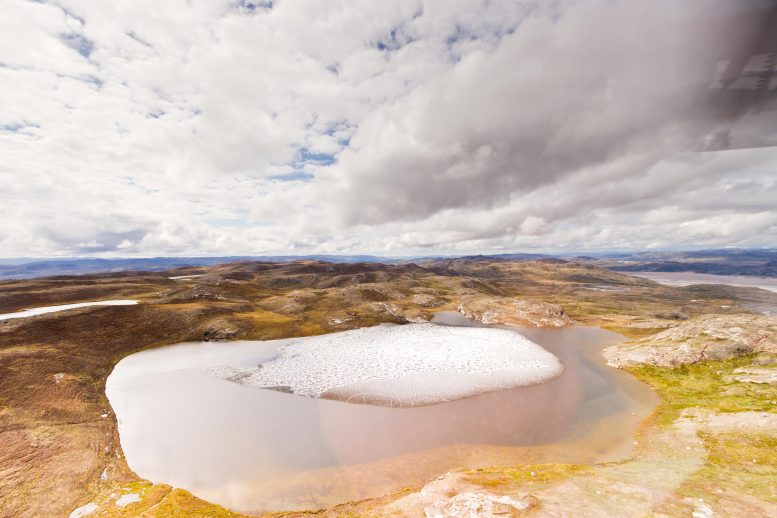
A large portion of Greenland melted about 416,000 years ago—perhaps a bit like the modern Greenland landscape shown in this photo—and became ice-free tundra, or boreal forest, a new study in the journal Science shows. The results help overturn a previous view that much of the Greenland ice sheet persisted for most of the last two and a half million years. Instead, moderate warming, from 424,000 to 374,000 years ago, led to dramatic melting. This finding indicates that the ice sheet on Greenland may be more sensitive to human-caused climate change than previously understood—and will be vulnerable to irreversible, rapid melting in the coming centuries. Credit: Joshua Brown/UVM
Long-lost ice core reveals that most of Greenland was green 416,000 years ago.
- A large portion of Greenland was an ice-free tundra landscape—perhaps covered by trees and roaming woolly mammoths—in the recent geologic past (about 416,000 years ago), a new study in the journal Science shows.
- The results help overturn a previous view that much of the Greenland ice sheet persisted for most of the last two and a half million years. Instead, moderate warming, from 424,000 to 374,000 years ago, led to dramatic melting.
- At that time, the melting of Greenland caused at least five feet of sea level rise, despite atmospheric levels of heat-trapping carbon dioxide being far lower than today (280 vs. 420 ppm). This indicates that the ice sheet on Greenland may be more sensitive to human-caused climate change than previously understood—and will be vulnerable to irreversible, rapid melting in the coming centuries.
- The scientists—from the University of Vermont (UVM), Utah State University, and fourteen other institutions—used sediment from a long-lost ice core, collected at a secret U.S. Army base in the 1960s, to make the discovery. They applied advanced luminescence and isotope techniques to provide direct evidence of the timing and duration of the ice-free period.
A Green Land
During the Cold War, a secret U.S. Army mission, at Camp Century in northwestern Greenland, drilled down through 4560 feet of ice on the frozen island—and then kept drilling to pull out a twelve-foot-long tube of soil and rock from below the ice. Then this icy sediment was lost in a freezer for decades. It was accidentally rediscovered in 2017 and shown to hold not just sediment but also leaves and moss, remnants of an ice-free landscape, perhaps a boreal forest.
But how long ago were those plants growing—where today stands an ice sheet two miles thick and three times the size of Texas?
An international team of scientists was amazed to discover that Greenland was a green land only 416,000 years ago (with an error margin of about 38,000 years).
Their new study was published in the journal Science on July 21, 2023.
Bulletproof Evidence
Until recently, geologists believed that Greenland was a fortress of ice, mostly unmelted for millions of years. But, two years ago, using the rediscovered Camp Century ice core, this team of scientists showed that it likely melted less than one million years ago. Other scientists, working in central Greenland, gathered data showing the ice there melted at least once in the last 1.1 million years—but until this study, no one knew exactly when the ice was gone.
Now, using advanced luminescence technology and rare isotope analysis, the team has created a starker picture: large portions of Greenland’s ice sheet melted much more recently than a million years ago. The new study presents direct evidence that sediment just beneath the ice sheet was deposited by flowing water in an ice-free environment during a moderate warming period called Marine Isotope Stage 11, from 424,000 to 374,000 years ago. This melting caused at least five feet of sea level rise around the globe.
416,000 years ago, much of the Greenland ice sheet was melted and green with plants, new research in the journal Science shows. It may have looked something like this modern Greenland tundra landscape near the southeastern coast—or it may even have been a boreal forest. Pictured here is University of Vermont professor Paul Bierman (front seat, left) on an NSF-sponsored expedition several years before the research presented in the new Science study which he co-led. Credit: Joshua Brown
“It’s really the first bulletproof evidence that much of the Greenland ice sheet vanished when it got warm,” says University of Vermont scientist Paul Bierman, who co-led the new study with lead author Drew Christ, a post-doctoral geoscientist who worked in Bierman’s lab, Professor Tammy Rittenour from Utah State University, and eighteen other scientists from around the world.
Understanding Greenland’s past is critical for predicting how its giant ice sheet will respond to climate warming in the future and how quickly it will melt. Since about twenty-three feet of sea-level rise is tied up in Greenland’s ice, every coastal region in the world is at risk. The new study provides strong and precise evidence that Greenland is more sensitive to climate change than previously understood—and at grave risk of irreversibly melting off.
“Greenland’s past, preserved in twelve feet of frozen soil, suggests a warm, wet, and largely ice-free future for planet Earth,” says Bierman, a geoscientist in UVM’s Rubenstein School of the Environment and Natural Resources and a fellow in the Gund Institute for Environment, “unless we can dramatically lower the concentration of carbon dioxide in the atmosphere.”
Into the Light
The team’s new study in Science, combined with their earlier work, is causing a major and worrisome rethinking of the history of Greenland’s ice sheet. “We had always assumed that the Greenland ice sheet formed about two and a half million years ago—and has just been there this whole time and that it’s very stable,” says Tammy Rittenour, a scientist at Utah State University and co-author on the new study. “Maybe the edges melted, or with more snowfall it got a bit fatter—but it doesn’t go away and it doesn’t dramatically melt back. But this paper shows that it did.”
Video of rotating 3D models of the Camp Century ice and sediment core built from photographs. This core helped reveal that a large portion of Greenland melted about 416,000 years ago and became ice-free tundra, a new study in the journal Science shows. The results help overturn a previous view that much of the Greenland ice sheet persisted for most of the last two and a half million years. Instead, moderate warming led to dramatic melting. This finding indicates that the ice sheet on Greenland may be more sensitive to human-caused climate change than previously understood—and will be vulnerable to irreversible, rapid melting in the coming centuries. Credit: Andrew Christ/UVM
At Rittenour’s lab, sediment from the Camp Century core was examined for what is called a “luminescence signal.” As bits of rock and sand are transported by wind or water, they can be exposed to sunlight—which, basically, zeros out any previous luminescence signal—and then re-buried under rock or ice. In the darkness, over time, minerals of quartz and feldspar in the sediment accumulate freed electrons in their crystals. In a specialized dark room, Rittenour’s team took pieces of the ice core sediment and exposed them to blue-green or infrared light, releasing the trapped electrons. With some advanced tools and measures, and many repeated tests, the number of released electrons forms a kind of clock, revealing with precision the last time these sediments were exposed to the sun. “And the only way to do that at Camp Century is to remove a mile of ice,” says Rittenour, “Plus, to have plants, you have to have light.”
These powerful new data were combined with insight from Bierman’s UVM lab. There, scientists study quartz from the Camp Century core. Inside this quartz, rare forms—called isotopes—of the elements beryllium and aluminum build up when the ground is exposed to the sky and can be hit by cosmic rays. Looking at ratios of beryllium and other isotopes gave the scientists a window into how long rocks at the surface were exposed vs. buried under layers of ice. This data helped the scientists show that the Camp Century sediment was exposed to the sky less than 14,000 years before it was deposited under the ice, narrowing down the time window when that portion of Greenland must have been ice-free.
Under Ice
Camp Century was a military base hidden in tunnels under the Greenland ice sheet in the 1960s. One strategic purpose of the camp was a top-secret operation, called Project Iceworm, to hide hundreds of nuclear missiles under the ice near the Soviet Union. As cover, the Army claimed the camp was an Arctic science station.
The missile mission was a bust, but the science team did complete first-of-its-kind research, including drilling a nearly mile-deep ice core. The Camp Century scientists were focused on the ice itself—part of an effort to understand Earth’s past ice ages and warm periods, the interglacials. They took little interest in the twelve feet of sediment gathered from beneath their ice core. Then, in a bizarre story, the ice core was moved in the 1970s from a military freezer to the University at Buffalo—and then to another freezer in Denmark in the 1990s. There it was lost for decades—until it was found again when the cores were being moved to a new freezer. More about how the core was lost, rediscovered in some cookie jars, and then studied by an international team gathered at the University of Vermont’s Gund Institute for Environment can be read here: Secrets Under the Ice.
Sea Level
Camp Century is 138 miles inland from the coast and only 800 miles from the North Pole; the new Science study shows that the region entirely melted and was covered with vegetation during Marine Isotope Stage 11, a long interglacial with temperatures similar to or slightly warmer than today. With this information, the team’s models show that, during that period, the ice sheet melted enough to cause at least five feet, and perhaps as much as twenty feet, of sea-level rise. The research, supported by the U.S. National Science Foundation, lines up with findings from two other ice cores collected in 1990s from the center of Greenland. Sediment from these cores also suggests that the giant ice sheet melted in the recent geologic past. The combination of these earlier cores with the new insight from Camp Century reveals the fragile nature of the entire Greenland ice sheet—in the past (at 280 parts per million of atmospheric CO2 or less) and today (422ppm and rising).
“If we melt just portions of the Greenland ice sheet, the sea level rises dramatically,” says Utah’s Tammy Rittenour. “Forward modeling the rates of melt, and the response to high carbon dioxide, we are looking at meters of sea level rise, probably tens of meters. And then look at the elevation of New York City, Boston, Miami, Amsterdam. Look at India and Africa—most global population centers are near sea level.”
“Four-hundred-thousand years ago there were no cities on the coast,” says UVM’s Paul Bierman, “and now there are cities on the coast.”
Reference: “Deglaciation of northwestern Greenland during Marine Isotope Stage 11” by Andrew J. Christ, Tammy M. Rittenour, Paul R. Bierman, Benjamin A. Keisling, Paul C. Knutz, Tonny B. Thomsen, Nynke Keulen, Julie C. Fosdick, Sidney R. Hemming, Jean-Louis Tison, Pierre-Henri Blard, Jørgen P. Steffensen, Marc W. Caffee, Lee B. Corbett, Dorthe Dahl-Jensen, David P. Dethier, Alan J. Hidy, Nicolas Perdrial, Dorothy M. Peteet, Eric J. Steig and Elizabeth K. Thomas, 20 July 2023, Science.
DOI: 10.1126/science.ade4248

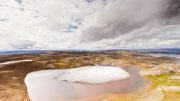
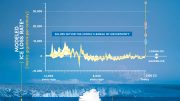
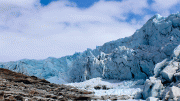
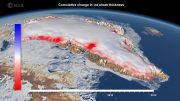
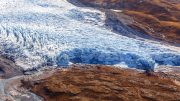
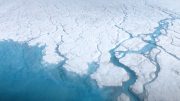

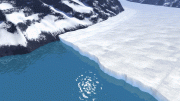
Surprisingly, there is no recognition for the work done by Dr. Chester Langway and others at the U.S. Army Cold Regions Research and Engineering Laboratory (Hanover, NH), in originally obtaining the drill cores.
https://www.sciencedirect.com/science/article/abs/pii/S0165232X08000116
“This indicates that the ice sheet on Greenland may be more sensitive to human-caused climate change than previously understood—and will be vulnerable to irreversible, rapid melting in the coming centuries.”
On the contrary! Despite low CO2 concentrations, which suggests that it plays a minor role compared to astronomical parameters in warming Earth, the ice came back, dispelling concerns about “irreversible” changes.
Maybe the ice could come back because the CO2 levels were low enough to allow for an ebb and flow of the ice sheet. The increased CO2 levels, as well as other green house gasses of today, may prevent the ice from returning if we can’t lower them.
“Maybe” and “may” are just unsupported conjecture.
My issue is with “irreversible.” The Earth has gone through several episodes of ‘Hothouse’ and “Ice-house” during the last 4.5 billion years. It has never gotten stuck in either extreme state.
It is also possible that warmer Arctic temperatures will allow the melting of sea ice, exposing the underlying water to evaporation, and increasing the absolute humidity of what is typically very dry air. As that more humid air is orographically uplifted over Greenland, the snow fall could increase. The problem is, complex dynamic systems don’t always behave as we intuitively think they should. The reality is, we just don’t know what will happen.
Long-term, there is poor correlation between CO2 levels and temperature. The temporal resolution for paleo environments is too coarse to be certain whether CO2 or temperature increased first during warming events. An Antarctic ice core strongly suggests that temperature increased several hundred years before CO2 did. Near term, there is no evidence that the COVID shutdowns in 2020 (average annual anthropogenic decline 10%; monthly declines >14%) had any impact on the rate of increase of atmospheric CO2, and 2020 is tied with the El Nino year 2016 for the highest global average temperature since measurements began.
https://wattsupwiththat.com/2022/03/22/anthropogenic-co2-and-the-expected-results-from-eliminating-it/
Should any readers have an interest in learning more about the early core drilling programs that the above main article refers to, I can recommend the following, written by Langway:
https://erdc-library.erdc.dren.mil/jspui/bitstream/11681/5296/1/CRREL-TR-08-1.pdf